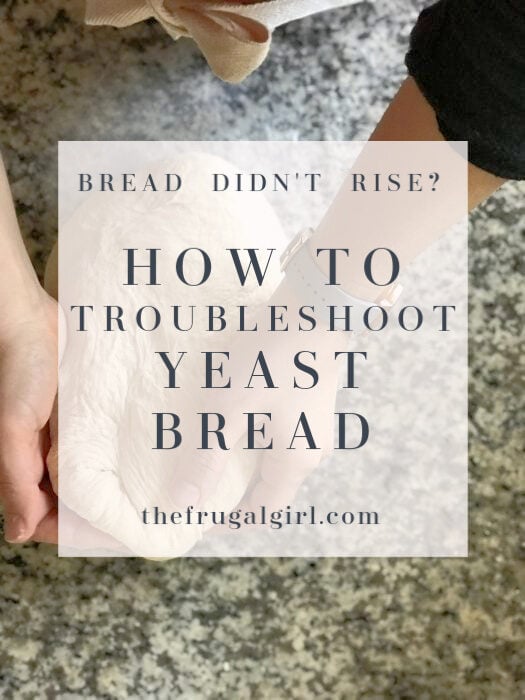
Since so many people are baking bread right now, I thought I’d publish this so I can take a stab at helping those of you who have written me about your yeast baking troubles.
 (the bread pictured here is challah)
(the bread pictured here is challah)
Problem: My bread didn’t rise at all!
If your bread dough didn’t change in size at all during the rising period, this probably means that your yeast is dead. There are several reasons this could happen.
Your liquids were too hot, so they killed the yeast
For recipes where you add the liquid directly to the yeast, 110°F is about right, and for recipes which combine the flour and the yeast before the liquid is added, 120-125°F is right. I use a digital instant-read thermometer to test the temperature of my liquids, though a non-digital one works fine too.
Your yeast is old
(Note: this is not usually the reason for flat bread. Keep reading below for the most common problem!)
If you’ve kept your yeast at room temperature for a really long time, it might have lost its potency. Keeping yeast in the refrigerator or freezer will prolong its shelf life greatly.
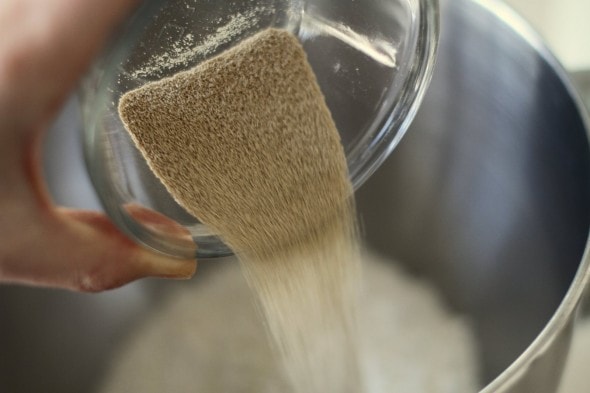
I keep mine in a screw-top lid in the freezer just to be safe. I could probably keep it in my cabinet, though, given how fast I go through a two-pound bag of yeast!

(Butternut squash rolls. Video in that post might be helpful to you.)
Problem: My bread rose, but not enough.
Again, there are a couple of causes for this.
Your yeast is old
Sometimes old yeast does work a little bit, but not enough to lift a batch of dough correctly.
Make sure you have new yeast, and store it in the fridge or freezer if you don’t bake a lot.
Your dough was too stiff.
Generally speaking, when I’ve helped people learn to make bread, they’ve been surprised at how soft the dough should be.
So, if someone’s dough isn’t rising properly, this is almost always the first thing I suggest looking at!
Most novice bakers err on the side of adding too much flour, so if your bread isn’t rising properly, this is the most likely cause.
Yeast raises dough by producing air bubbles, which in turn lift the dough. If the dough is very stiff, the yeasty air bubbles won’t be strong enough to lift the dough.
The dough should be soft and fairly pliable…like the recipe books say, it should feel kind of like a baby’s bottom!

The flour amounts in a yeast bread recipe are really just guidelines. The amount of flour you will actually need can vary a lot depending even on which brand of flour you are using.
Let feel be your ultimate guide, not the cup measurements.
You didn’t knead properly/sufficiently
As I explained in my post about gluten, kneading stretches and develops the gluten in the flour.
Proper kneading produces stretchy gluten strands that are strong enough to hold and enclose the yeasty air bubbles.

I wrote a post on kneading that might be helpful to you.
Your house is too cold
My own house is actually a little too cold for bread rising in the wintertime.

To combat this difficulty, I turn my oven on to 350 for 1 minute (I set a timer so I don’t inadvertently leave the oven on) and then put the dough inside the oven to rise.
This provides just enough heat for the yeast to do its work.
(Incidentally, your bread dough will eventually rise in a cold house…it just will take longer for the dough to double in size.)
If you let your dough rise in the oven, just don’t forget to remove it before heating your oven!
Problem: My bread is crumbly.
This is probably caused by insufficient kneading. Properly kneaded dough is stretchy and produces bread that is more chewy than crumbly.

See above for solutions to this problem, and also check out my post on kneading and gluten.
It could also be caused by dough that is too dry due to too much flour. See above for my thoughts on that.
Problem: My bread was undercooked/doughy inside.
Obviously, this is sometimes caused by simply not baking the dough long enough, but there are a couple of less obvious things that contribute to this problem.
Your dough didn’t rise enough
Dough that hasn’t risen properly tends to be on the dense end of things, and thus takes much longer to bake than properly risen dough does. See above for solutions to rising difficulties.
You didn’t preheat your oven
Bread that starts out in a cold oven will obviously take longer to bake than bread that starts out in a hot oven.
You might also be surprised to know that starting with a cold oven will also produce bread that is not as light and fluffy. The initial blast of heat from a preheated oven gives the bread a little bit of a last-minute rise (bakers call this “oven spring”).
I always, always preheat my oven before I bake bread. To help me remember to do this, I set a timer to go off about 10 minutes before the dough will be risen enough to bake.
Your oven temperature sensor is not calibrated properly
This is a fairly uncommon cause of underbaked bread, but if you’re still having difficulties after fixing the previous two problems, you might want to get an oven-safe thermometer and check to make sure that your oven really is 350 degrees when you’ve set it to 350 degrees.
If you’d like a concrete way of testing your bread for doneness (I don’t think that’s a word, really!), you can insert an instant-read thermometer into the side of a loaf. Most breads are done when they reach 190 degrees.
I rarely do this myself, but you might find it to be helpful if you’re new at baking.
Problem: Why is my yeast dough hard to roll out?
It is possible that you have added too much flour, which will make your dough too stiff to roll.
It’s also possible that you just need to give it a couple of minutes to relax. When you first punch down your risen bread dough, the stretchy gluten proteins will be a little tight. If you let the dough sit on the counter for about 5 minutes, the gluten should relax and the dough will be easier to roll.
Want some easy breads to try?
If you’ve never tried yeast baking before, you might feel very overwhelmed by reading this list!
Yeast baking is really not as scary as it seems, though, and many of my readers will attest to that. If you want to give it a try, here are a few recipes that are fairly simple.
Garlic Breadsticks-These are so small, it’s easy to get them to rise and bake all the way through.
Glazed Honey Pan Rolls-This dough rises very easily, which is why I included it here. You can leave off the glaze if you prefer to keep things simpler.
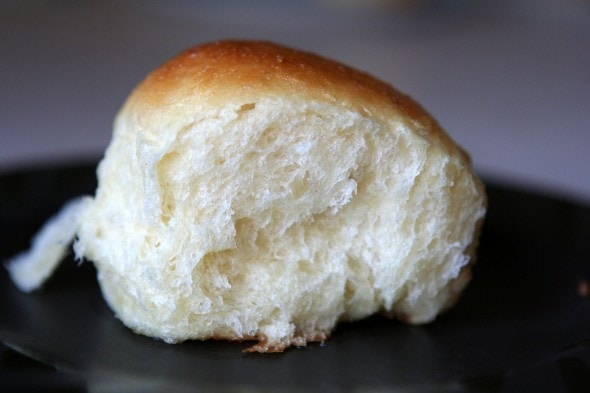
Easy French Bread-These loaves are not as tall as regular loaves of bread, which means that it is not as difficult to get them to rise and bake properly.
And the loaves are so handy for panini sandwiches, garlic bread, Beef au Jus sandwiches, and the like.
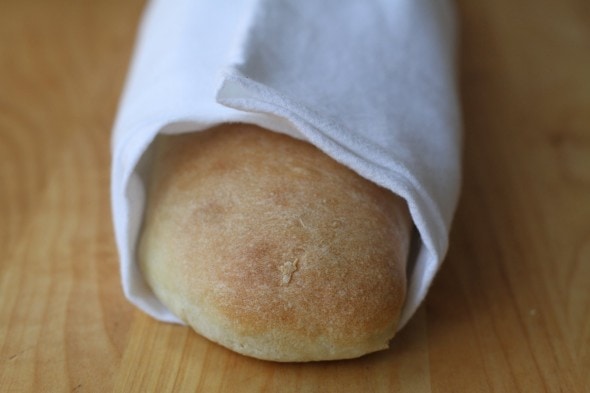
Thin-Crust Pizza -This dough is almost entirely kneaded in the food processor, which makes it almost fool-proof. I just use my normal food processor and my normal blade…nothing special is required. You’ll need a pizza stone for optimum baking results, though.
English Muffin Bread-This is a batter bread, which means it uses a very soft dough that is just mixed in a stand mixer…no kneading necessary!
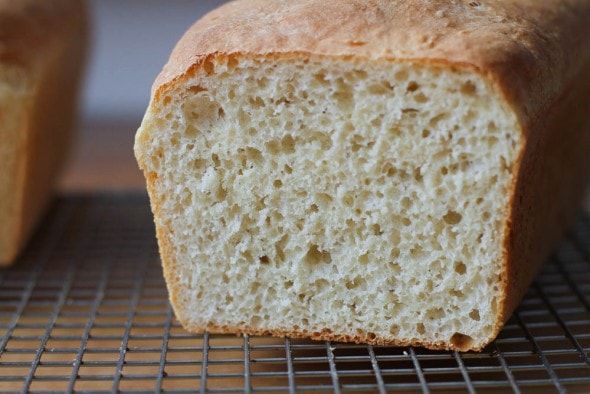
And if you are one of those people who is just not interested in messing with yeast, you’ll be pleased to know that there are a number of no-yeast baking recipes in the archives.
There’s even a recipe for no-yeast sandwich bread.
________________________
I hope that this helps to solve some of your yeast-baking problems. I’m sure some of my readers who are experienced bakers will be by to share some of their solutions as well.
And of course, you can always email me if you have a problem I didn’t address here. Happy Baking!
P.S. Here’s a roundup of all the yeast recipes I’ve posted; you can pin it for easy reference in the future.
P.P.S. Good flour makes a difference in yeast bread baking. Gold Medal unbleached is a great affordable option, and King Arthur All Purpose flour or King Arthur Bread flour are good (but pricier) options. This is a case where I think it’s worth it to spring for name brand instead of store brand.

Laverne
Thursday 4th of March 2021
I made the bread recipe from Frugal Wife. It said to add the yeast to the flour without proofing it first. I did this and was sad to say the yeast didn’t dissolve this the bread is poor. I have been baking bread/dough recipes for probably 50 years and was hesitant to do this. However, I did follow if word for word. Very disappointed.
Kristen
Thursday 4th of March 2021
Oh, interesting. A lot of my bread recipes call for adding the yeast to the flour, then adding in liquids and mixing.
But if that method doesn't work for you, you can always modify a recipe by dissolving your yeast in a bit of water first and then proceeding with the recipe.
Kristy S. Mitchell
Monday 28th of September 2020
Should you throw out hard dough that rose halfway. I have made recipe before and dough rose nicely. Also, dough is breaking instead of stretching. Should I continue to bake or just start over?
Kay
Sunday 27th of September 2020
Approximately how long do you kneed dough for light and fluffy yeast rolls? What can I do if my yeast rolls are not light and airy? The yeast was active and the dough rose as it should have.
Kristen
Sunday 27th of September 2020
Usually, the problem with heavy bread is that there's too much flour added. Is your dough fairly soft and slightly sticky?
Also, the type of flour can sometimes be a problem; I like Gold Medal unbleached all purpose flour, and if you want to get fancier, King Arthur all purpose flour is really lovely!
Sarah
Saturday 4th of July 2020
Here’s one you haven’t listed. I was moving my bread pan after the final rise and it fell UPSIDE DOWN!!! It pretty much flattened. Is it salvageable?
Kristen
Sunday 5th of July 2020
Yep! I'm probably too late to help you this time, but if this happens again, you can just let it rise one more time. This rise will go quicker, so keep an eye on it so it doesn't overrise.
J
Thursday 14th of May 2020
Kristen, In the Frugal Girls receipt dose not say how to prep your yeast before adding to wet ingredients? I’ve always heated some water 105• and let my yeast start working before adding to wet ingredients when it cools down a bit so as not to clabber my eggs? What’s your suggestion? Also my mom always scalded the milk.. What does that help in bread making? J Middlebrooks
Kristen
Thursday 14th of May 2020
As I understand it, modern milk does not need to be scalded before use in a bread recipe. I see that all the time in my old bread cookbooks too, but I don’t ever scald mine; I just heat it to the temperature specified in the recipe (that heat is important because warm dough will encourage the yeast to grow.)
Modern yeast also does not require a head start in warm water. You can certainly do it that way if you want; no harm, no foul. But it’s not necessary.